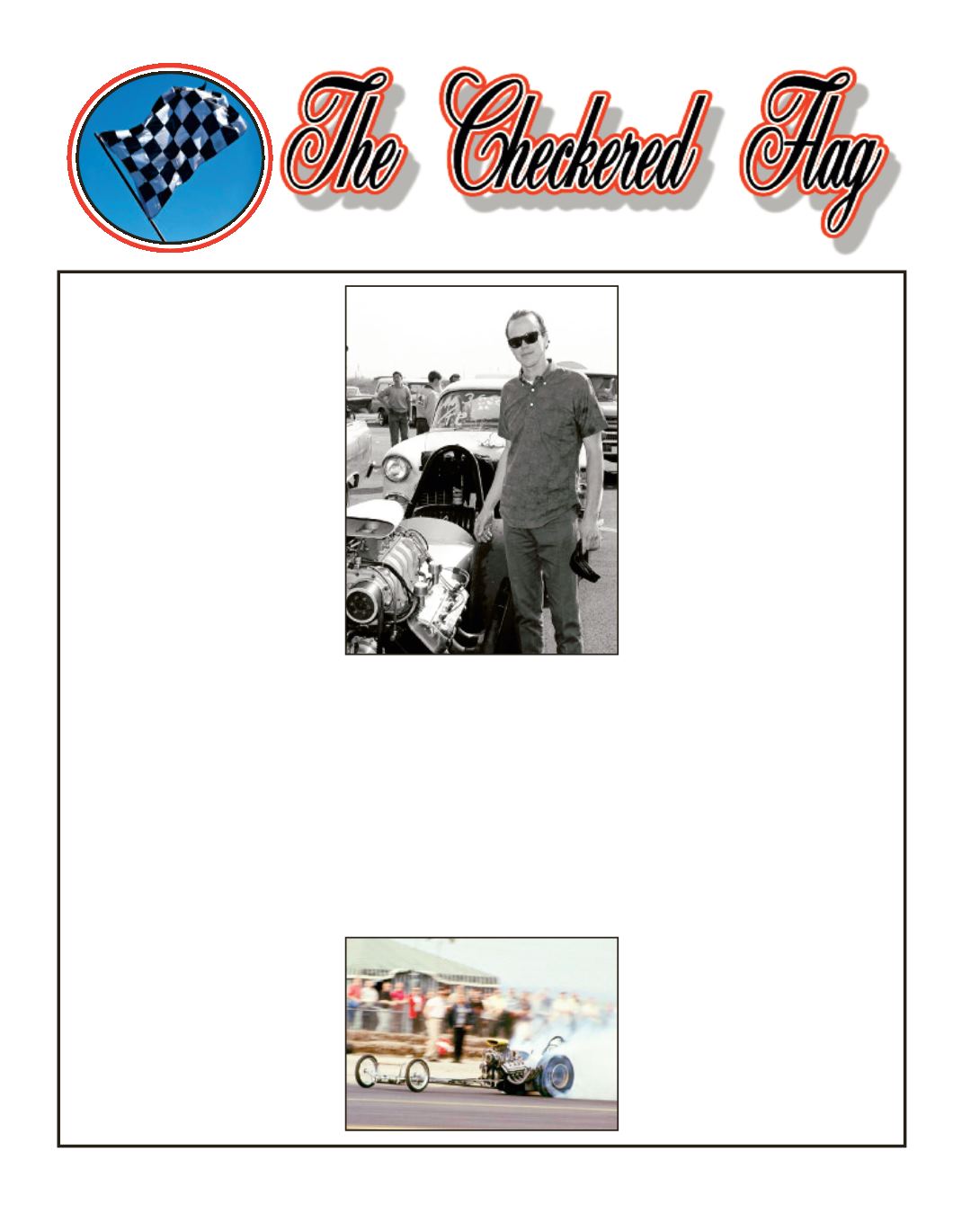

The SHELBY AMERICAN
Fall 2016 83
BOB SKINNER
August 15, 2015
The story of the Surfers Drag
Race Team is one of the better
known anecdotes in top fuel drag
racing in the mid-sixties. That was
the time just before drag racing was
making the transition from ama-
teur to professional, especially in
the dragster classes. The Surfers
team consisted of Tom Jobe and Bob
Skinner, who built the car and en-
gines, and Mike Sorokin who han-
dled the driving. They became
famous for running a very stripped-
down, no-nonsense dragster with-
out a sponsor. They never even had
their names on the car.
The Surfers had a casual, laid-
back attitude and dressed very con-
servatively, looking like the other
kids they knew in Santa Monica.
Without their names on the car not
many competitors at the Southern
California drag strips even knew
who they were. They rode skate-
boards in the pits so they were
called “the surfers.” At first Jobe
and Skinner weren’t even aware of
it and eventually they went along
with the name.
Their dragster wasn’t one of
those cutting edge, pushing the en-
velope cars. Jobe and Skinner were
just detail-oriented. Skinner, espe-
cially, was extremely observant and
able to learn from others—both
what they did right and what they
did wrong. They became top con-
tenders by using a higher percent-
age of nitromethane than anyone
else (96% vs. everyone else’s 70%-
80%). In 1966 they won at Bakers-
field, which was considered the
Superbowl of drag racing.
Skinner and Jobe met in high
school when they discovered they were
both interested in cars and drag rac-
ing. After high school they went to
work in Jobe’s father’s machine shop
and after getting fired, rehired, fired
again and rehired again, Skinner fi-
nally quit for good and went to Ger-
many where he got a job in a machine
shop as an apprentice toolmaker. He
didn’t speak a word of German.
Skinner returned to the U.S. in
1962 and got a job at Shelby American
as a machinist and fabricator. He liked
the job and enjoyed working around
Cobras. At night he and Jobe
worked on their dragster. By 1965
their dragster had become pretty
successful and Skinner quit Shelby
American in order to campaign the
Surfers’ dragster full-time with
driver Sorokin. Jobe stayed home to
cut down on expenses. When the
team needed replacement parts,
Jobe’s job was to ship them. They
did well enough to continue doing it
but Skinner soon became disen-
chanted by the increasing costs and
the encroaching professionalism en-
tering the sport as well as sponsors
and the pressure to keep them
happy.
After the 1966 season both
Skinner and Jobe moved around
from one motorsports project to an-
other. Skinner went to work for
Mickey Thompson on his Land
Speed Record streamliner. Sports
car contacts from Shelby American
got him and Jobe positions on John
Cannon’s Can-Am team in 1968.
The high point of that adventure
was at Laguna Seca when it rained
and the narrow rain tires allowed
Cannon to win the race.
At the end of the 1972 season
Skinner declared that he and racing
were done. And that was it. He
never looked back and never wanted
to talk about his experiences; no in-
terviews and no reunions. He had a
unique talent for evaluating me-
chanical problems and finding solu-
tions. He was never a fan of formal
schooling, but was successful at
learning from his own experiences.
Eventually he moved to an apple or-
chard north of San Francisco where
he lived until his death.


















